Extra practice PDF for free (my bonus gift to you)...Hello and welcome. My name is Scott Harris. Before you begin the book, I want to let you know about an (awesome) learning aid I made. It's a PDF full of what I consider to be some of the most useful fretboard diagrams out there. This book of diagrams is my gift to you. This and my other best-selling guitar books were based on these diagrams, which I made for myself. Click here to download the PDF for free. 
 All the best, Scott J.
All the best, Scott J.
Harris Copyright Information Pentatonic & Blues Scales Copyright January 27, 2016 by Scott J. Harris ASIN: B01B6P37D4 All rights reserved. No part of this book may be reproduced in any form without permission in writing from the author. Reviewers may quote brief passages in reviews. Table of ContentsIntroduction I never considered myself to be a musician when I was growing up. In fact, I was thoroughly convinced I did not have what it takes to be able to play music.
I took cello lessons and failed miserable. I took piano lessons without making much progress. I sort of learned to play the recorder in school, if you can call playing hot cross buns playing. What Im getting at is that I was a terrible musician. I couldnt sing, I couldnt keep time, I couldnt play an instrument, the list of things I couldnt do with respect to music is long. I found this particularly frustrating because my father is an absolutely fantastic professional saxophone player.
I figured somewhere in me there had to be an inherent talent for music. I was very wrong. What I realized as I grew older was that my father didnt have an inherent musical talent either. What he did have was an unstoppable drive to succeed. It took me a few years to get over my false idea that I could never be a good musician. A few years earlier my father had bought me a guitar as a Christmas present.
It was sitting in a dusty case in my room, neglected. I had recently met a man named Jacob, another amazing musician. Jacobs talent was with string instruments, particularly the bass. I asked his advice about what I should learn first. He told me to learn music theory, so I went online and began to read. I read a lot and started to teach myself scales.
I was still really terrible at the guitar, but I kept at it, and slowly I improved. I stress the word slowly. A couple weeks into this process I asked Jacob to teach me guitar, and he said he would. I quickly found out that Jacobdespite being a wonderful playeris a horrible teacher. Jacob cannot think like a beginner, he cannot break down the knowledge and present it in bite sized pieces that are easy to swallow and digest. I wrote this book with that in mind.
During the process of teaching myself the guitar, I learned a lot about how to teach guitar. I applied what I learned to write my best-selling guitar series: Scott's Simple Guitar Lessons. Im still learning today. Music is extremely complicated and eclectic. I know for a fact that I will never master music, but that was never my goal. My goal was to be able to play with other people and enjoy doing it.
I've achieved that goal, and it was worth the work. Now I want to help you achieve your musical goals, no matter what they are. I want to use what I learned the slow, hard way to make your learning process fast and easy. All the best,  PS: As these books delve deeper into music theory, the foundation that I have laid in previous books becomes more important. Keep that in mind if something does not make sense to you. I may have explained it in-depth in a previous book. If you have ANY questions, send me an email! Musical Language The first step to memorize the guitar fretboard is to understand how it works.
PS: As these books delve deeper into music theory, the foundation that I have laid in previous books becomes more important. Keep that in mind if something does not make sense to you. I may have explained it in-depth in a previous book. If you have ANY questions, send me an email! Musical Language The first step to memorize the guitar fretboard is to understand how it works.
Once you understand the basic structure youll see patterns everywhere. Music is made up of notes that follow a pattern. You can think of these notes in a lot of ways, but most of them wont help you to communicate with other musicians or use the huge amount of musical material already available. There is a musical language that has become standard: everyone uses it so everyone can communicate, stranger or not. The backbone of this musical language is the first 7 letters of the English alphabet, generally beginning with C. You should know that this is an arbitrary starting point, there is no first note or last note.
C D E F G A B These 7 notes are called natural notes. Now, there are 5 more notes you need to know about. These are called sharps and flats. Sharps and flats are often thought of as "in-between" notes. This is because of how sharps and flats are named, which I'll explain in just a second. First you should know that sharp, flat, and natural notes each have a symbol in music:  NOTE: In this book, I'm going to use a "#" sign to indicate that a note is sharp, and a lower case "b" to indicate that a note is flat.
NOTE: In this book, I'm going to use a "#" sign to indicate that a note is sharp, and a lower case "b" to indicate that a note is flat.
I don't use the natural note symbol in this book (though I do sometimes tell you that a note is natural). To name the 5 sharp and flat notes, you use one of the natural notes and a sharp or flat symbol. For example, the note "in-between" A and B is called A# (read as: "A sharp") OR Bb (read as "B flat") " A sharp" (A#) and "B flat" (Bb) are different names for the same note. When youre going up the notes (A B etc.), generally you use sharps (A A# B ). When you're going down the notes (B A etc.), generally you use flats (B Bb A). All of the sharps and flats written out in order look like this:  Notice that between B and C, and between E and F there are no sharps or flats. This does not mean there is no E sharp.
Notice that between B and C, and between E and F there are no sharps or flats. This does not mean there is no E sharp.
What it means is that E sharp is F. You can think of a sharp ( #) as a note plus 1/2, and a flat ( b ) as a note minus 1/2. The note A plus 1/2 (A#) is the same as B minus 1/2 (B b) . So, in total there are 12 notes: C = 1 C# / Db = 2 D = 3 D# / Eb = 4 E = 5 F = 6 F# / Gb = 7 G = 8 G# / Ab = 9 A = 10 A# / Bb = 11 B = 12 This number (12) is the number of musical notes you have to work with. The fretboard of a guitar (and every other string instrument) can be described entirely with these notes. When you get to the end of the twelve notes, the cycle repeats.
The notes themselves have a different pitch (how high or low or a note sounds), but the names are the same. The piano keyboard is the perfect way to see how the twelve notes repeat (and to see sharps and flats VS natural notes). In this diagram, the white keys are natural notes, and the black keys are sharps and flats.:  Notice how every note on the piano keyboard appears twice. For example, there is a C on the left, and a C in the middle. Now, there is a "musical distance" between the C on the far left and the C in the middle. This distance is called an interval. In the next section I'll explain why intervals are one of the most important ideas in all of music theory. Turn the page and we'll continue
Notice how every note on the piano keyboard appears twice. For example, there is a C on the left, and a C in the middle. Now, there is a "musical distance" between the C on the far left and the C in the middle. This distance is called an interval. In the next section I'll explain why intervals are one of the most important ideas in all of music theory. Turn the page and we'll continue
Next page

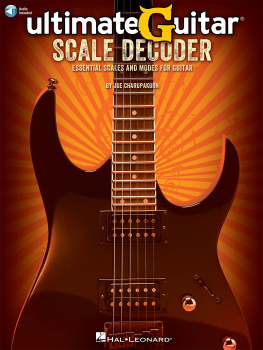
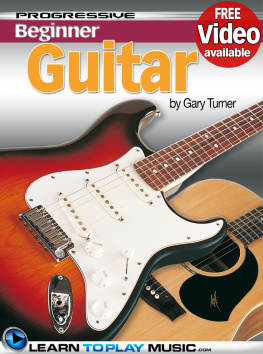

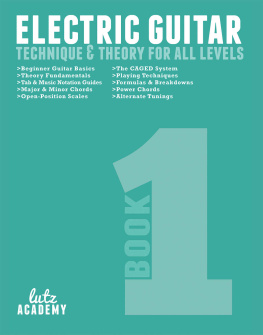
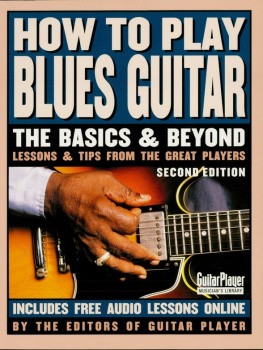
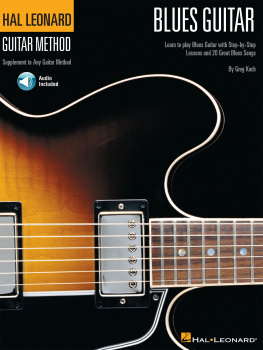
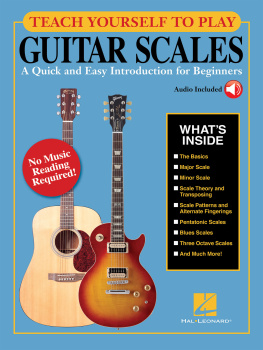
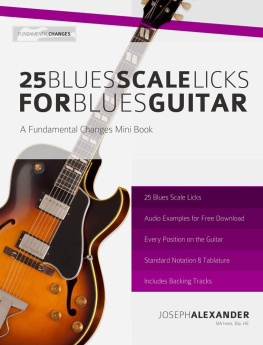

 All the best, Scott J.
All the best, Scott J. PS: As these books delve deeper into music theory, the foundation that I have laid in previous books becomes more important. Keep that in mind if something does not make sense to you. I may have explained it in-depth in a previous book. If you have ANY questions, send me an email! Musical Language The first step to memorize the guitar fretboard is to understand how it works.
PS: As these books delve deeper into music theory, the foundation that I have laid in previous books becomes more important. Keep that in mind if something does not make sense to you. I may have explained it in-depth in a previous book. If you have ANY questions, send me an email! Musical Language The first step to memorize the guitar fretboard is to understand how it works. NOTE: In this book, I'm going to use a "#" sign to indicate that a note is sharp, and a lower case "b" to indicate that a note is flat.
NOTE: In this book, I'm going to use a "#" sign to indicate that a note is sharp, and a lower case "b" to indicate that a note is flat. Notice that between B and C, and between E and F there are no sharps or flats. This does not mean there is no E sharp.
Notice that between B and C, and between E and F there are no sharps or flats. This does not mean there is no E sharp. Notice how every note on the piano keyboard appears twice. For example, there is a C on the left, and a C in the middle. Now, there is a "musical distance" between the C on the far left and the C in the middle. This distance is called an interval. In the next section I'll explain why intervals are one of the most important ideas in all of music theory. Turn the page and we'll continue
Notice how every note on the piano keyboard appears twice. For example, there is a C on the left, and a C in the middle. Now, there is a "musical distance" between the C on the far left and the C in the middle. This distance is called an interval. In the next section I'll explain why intervals are one of the most important ideas in all of music theory. Turn the page and we'll continue